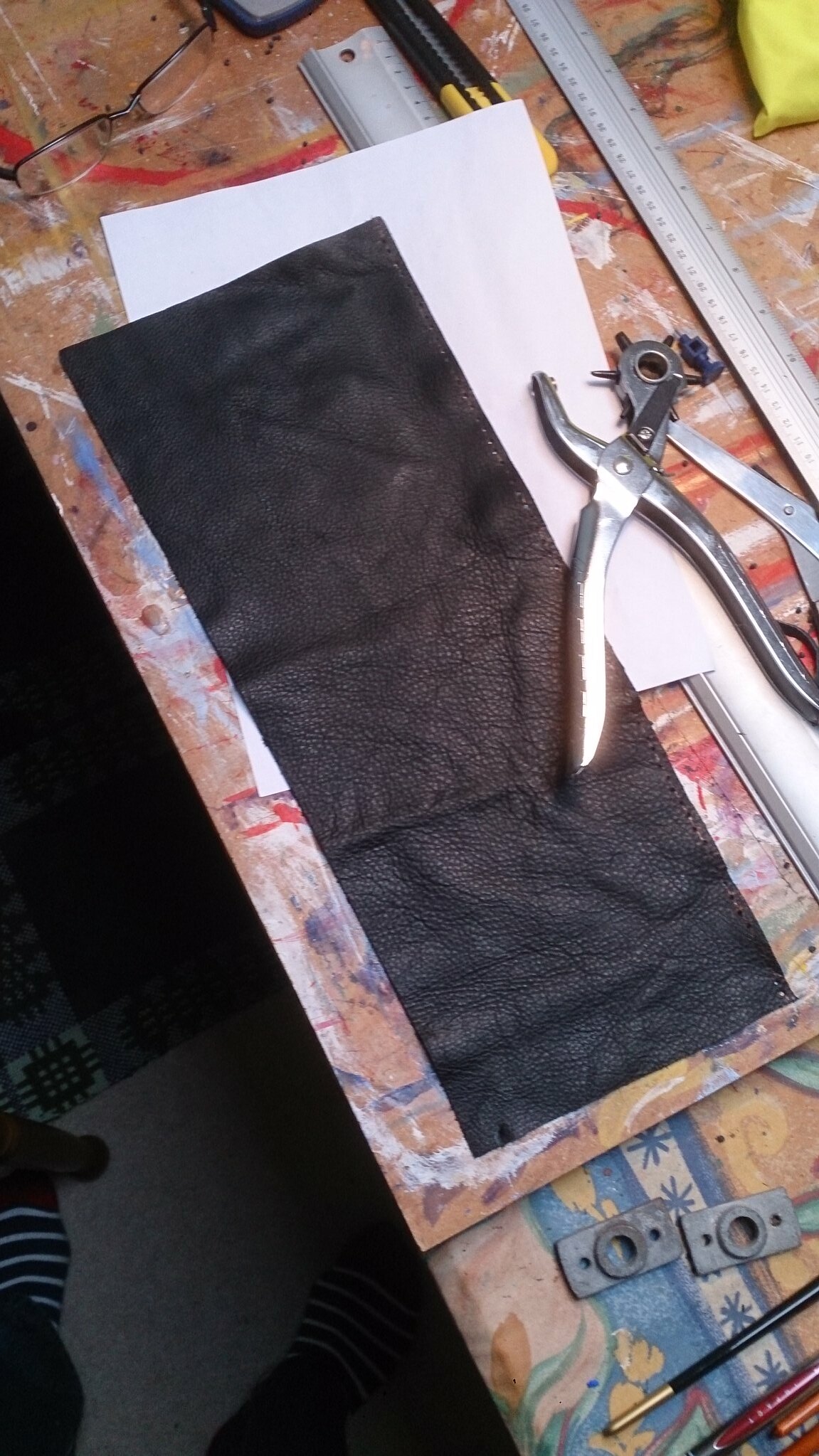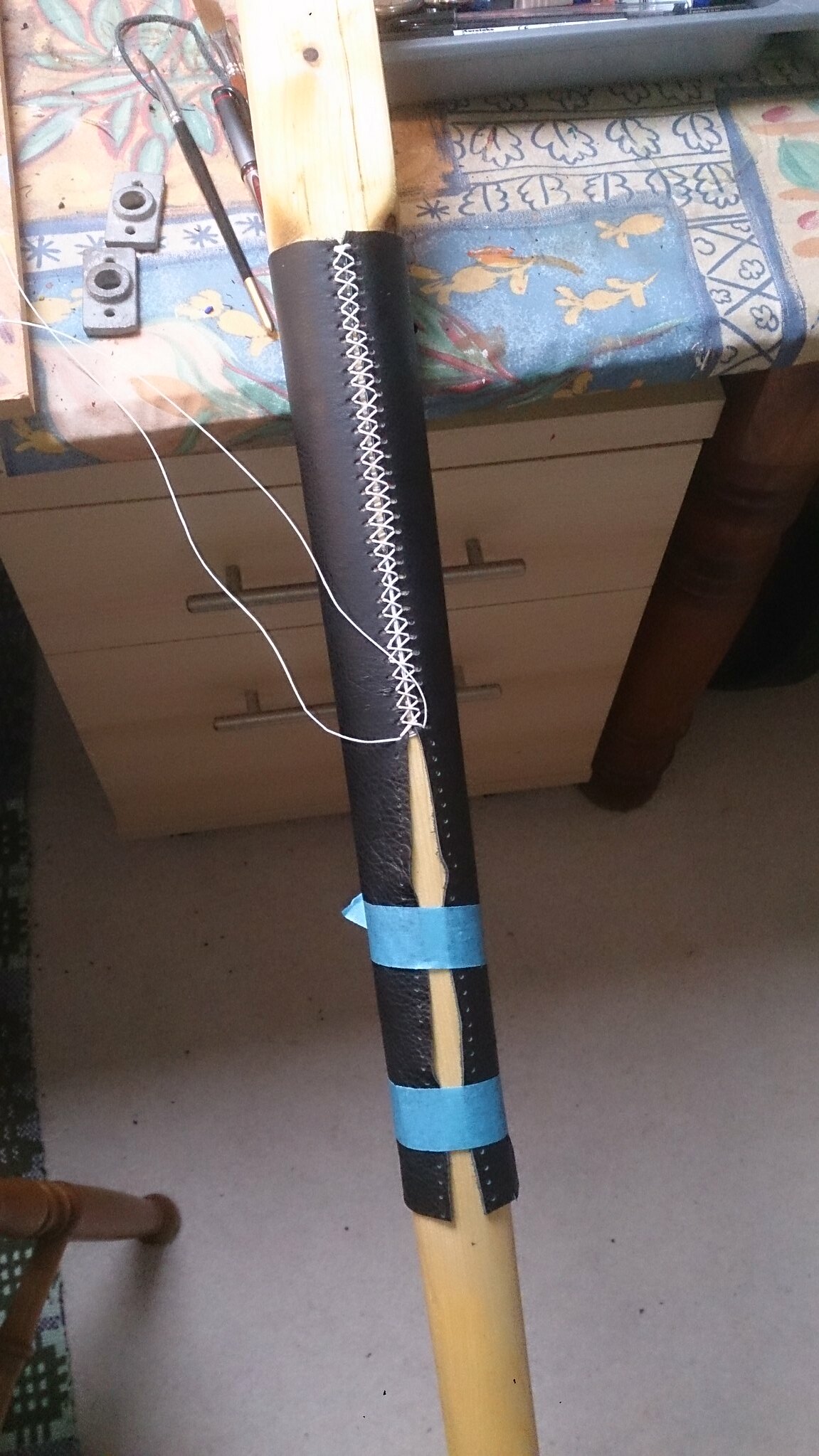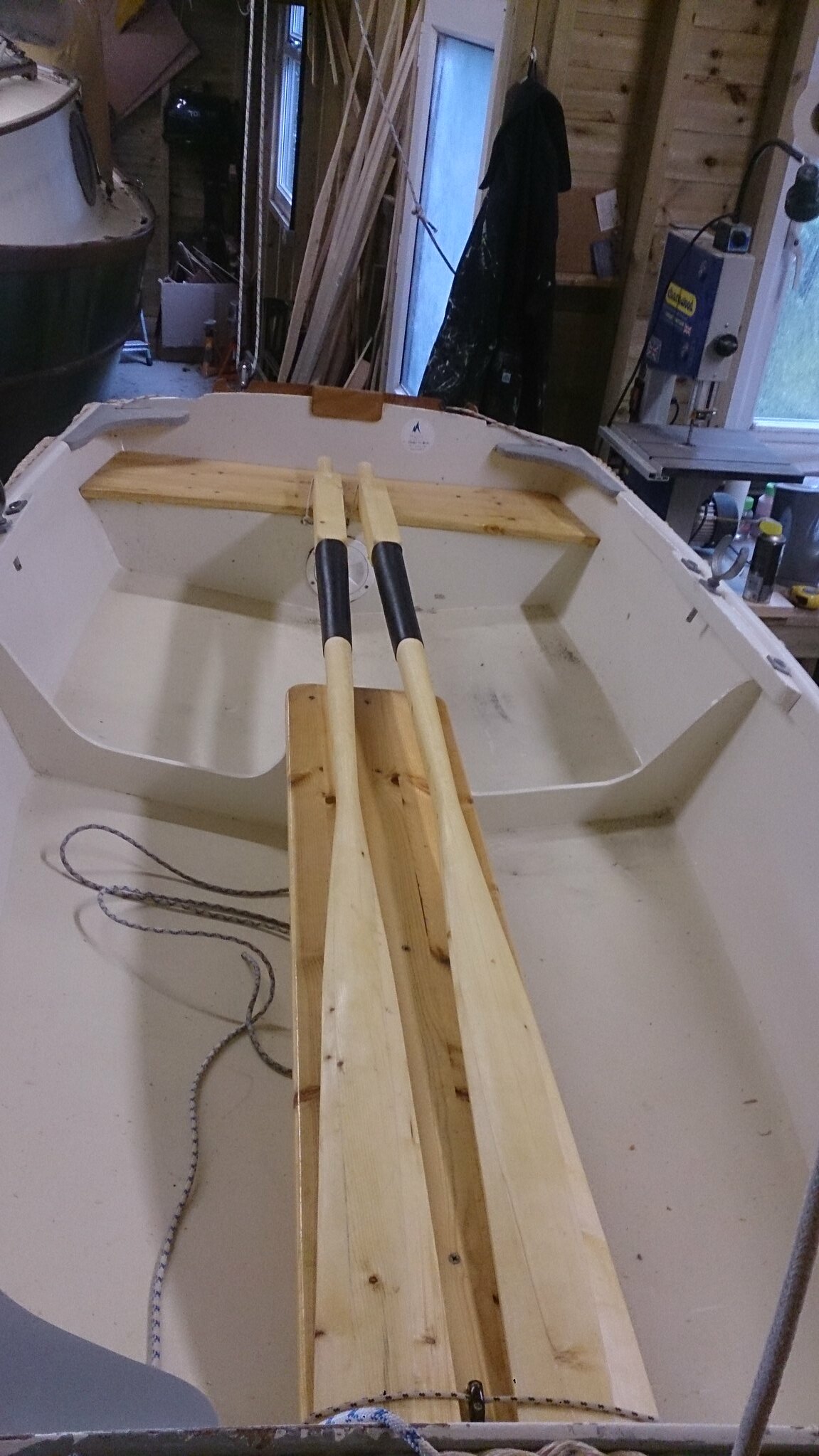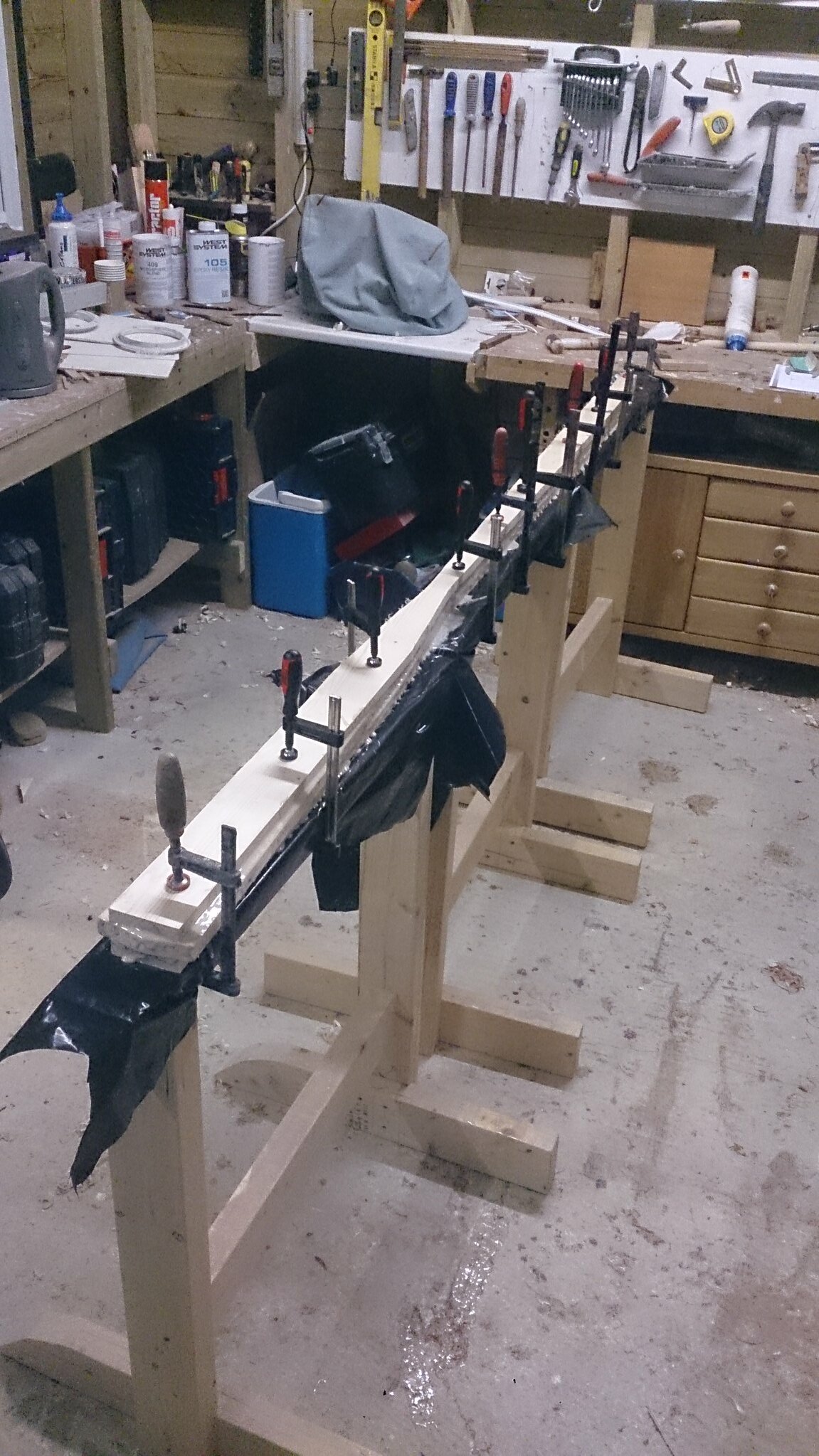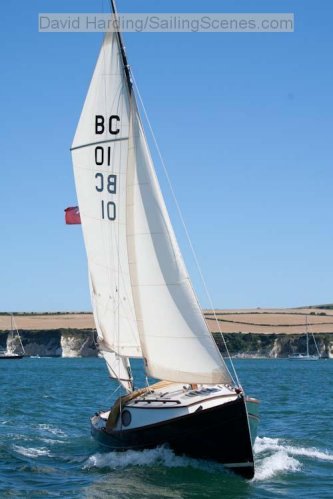I am going to continue this blog on a new Wordpress site. I have got tired of the restrictions and changes that occur to the image library here on Blogspot. Google try to tie the whole thing too tightly to Google+ and I have just got fed up with it. The old posts will stay here, but if you want to read any new ones, Please hop over to:
14 November 2014
2 November 2014
Oars finished, just have to try them out now...
I've applied about 5 coats of linseed oil to the oars, and will probably put on many more. That s the beauty of oil.
Bought two off-cuts of leather from ebay. I think they are left over upholstery bits. I also found an excellent articles on Paul Gartside's website on how to stitch oar leathers on, Very detailed and I would have made a real mess if I hadn't read it first. http://www.gartsideboats.com/faq/oar-leathers.html
Cutting the leather is slightly tricky, but it stretched nicely to fit. I didn't wet it as it was very soft already. Each leather needed about 50 holes punched on each long edge. These need to be done fairly carefully so that they match.
Stitching is with waxed whipping twine and two sail makers needles. I was worried the threads would pull right through the leather, but that never happened.
The oars fit in the boat nicely and I have made an arrangement of loops and bungies that I hope will hold them in place when towing
Bought two off-cuts of leather from ebay. I think they are left over upholstery bits. I also found an excellent articles on Paul Gartside's website on how to stitch oar leathers on, Very detailed and I would have made a real mess if I hadn't read it first. http://www.gartsideboats.com/faq/oar-leathers.html
Cutting the leather is slightly tricky, but it stretched nicely to fit. I didn't wet it as it was very soft already. Each leather needed about 50 holes punched on each long edge. These need to be done fairly carefully so that they match.
Stitching is with waxed whipping twine and two sail makers needles. I was worried the threads would pull right through the leather, but that never happened.
The oars fit in the boat nicely and I have made an arrangement of loops and bungies that I hope will hold them in place when towing
20 October 2014
Both oars largely complete
I have carved out the second oar, and again, am very pleased with the result. The weights of the two are within 20gms at about 1900gm each. They balance at almost the same point and they even fit the rowlocks, which was a bit of luck because I had forgotten to check those when I started!
Planing them to match was much easier than I expected. By laying the finished one alongside the one I was working on, I could continuously compare them visually, and using a cheap vernier calliper, I just compared thicknesses at any position along them. I still haven't managed to hollow out the blades either side of the central ridge. I bought a convex base spokeshave and it is one of the worse tools I have wasted money on. The curve of the blade doesn't match the curve of the base. The chip breaker doesn't fit properly, even after regrinding, and the blade was blunt. I couldn't get a single decent shaving off with it. I am planning to get some coarse sandpaper and a large diameter dowel, and have a go with that, but they will work as they stand. I still need to get some leather for each.
Planing them to match was much easier than I expected. By laying the finished one alongside the one I was working on, I could continuously compare them visually, and using a cheap vernier calliper, I just compared thicknesses at any position along them. I still haven't managed to hollow out the blades either side of the central ridge. I bought a convex base spokeshave and it is one of the worse tools I have wasted money on. The curve of the blade doesn't match the curve of the base. The chip breaker doesn't fit properly, even after regrinding, and the blade was blunt. I couldn't get a single decent shaving off with it. I am planning to get some coarse sandpaper and a large diameter dowel, and have a go with that, but they will work as they stand. I still need to get some leather for each.
12 October 2014
First oar largely finished and second under way
The first of my "Pete Culler" oars is largely finished, apart from a lot of sanding and maybe a little trimming here and there. Very satisfying thing to make. Lots and lots of planing of wood shavings, which has an almost zen like feeling to it. Hard to stop.
The handle was relatively easy to form, as it starts square, then circular. After that it tapers all the way to the tip, which is tricky. The blade has to be judged by eye and touch, it is very hard to measure anything. I couldn't hollow each side of the blade as I don't have a round bottomed plane, but I think it looks quite good without the hollow.
The really tricky part will be making a second oar to match.
The handle was relatively easy to form, as it starts square, then circular. After that it tapers all the way to the tip, which is tricky. The blade has to be judged by eye and touch, it is very hard to measure anything. I couldn't hollow each side of the blade as I don't have a round bottomed plane, but I think it looks quite good without the hollow.
The really tricky part will be making a second oar to match.
9 October 2014
New oars
I have started making a new pair of oars for my dinghy. The ones I have are too short and really not very good. I have got plans from Peter Culler's book on boat building, and adjusted the lengths a bit to suit. For timber I just got a pack of four eight foot boards from B&Q. Each oar is a sandwich of three boards. Much, if not most, of the outer boards will be planed off in the shaping process. This first photo shows the first oar blank cut out, alongside one of my current oars and an uncut board.
I marked the outline from the plans onto one board and cut it out on my band saw. This was quite a rigmarole as I had to unscrew the saw from my work bench and screw it onto a workmate so that I could get enough space for the board lengths on to and off of the saw table. Once I had cut one blank I used that to mark out the other five. This was quite a slow process. I think my saw blade must be getting blunt.
Three blanks are sandwiched together with polyurethane glue. A really messy process, the glue squelched out all over the place. Keeping the blanks in line was quite tricky as the clamps were tightened. The two outer layers are a bit narrower than the central one, but this won't matter as they will be carved down to a tapered side and won't come anywhere near the edge of the finished blade, The outer layers are unlikely to come more than a third of the way down the finished blade. I am seriously thinking of buying a power plane, because there is an awful lot of wood to remove.
I marked the outline from the plans onto one board and cut it out on my band saw. This was quite a rigmarole as I had to unscrew the saw from my work bench and screw it onto a workmate so that I could get enough space for the board lengths on to and off of the saw table. Once I had cut one blank I used that to mark out the other five. This was quite a slow process. I think my saw blade must be getting blunt.
Three blanks are sandwiched together with polyurethane glue. A really messy process, the glue squelched out all over the place. Keeping the blanks in line was quite tricky as the clamps were tightened. The two outer layers are a bit narrower than the central one, but this won't matter as they will be carved down to a tapered side and won't come anywhere near the edge of the finished blade, The outer layers are unlikely to come more than a third of the way down the finished blade. I am seriously thinking of buying a power plane, because there is an awful lot of wood to remove.
Subscribe to:
Posts (Atom)

